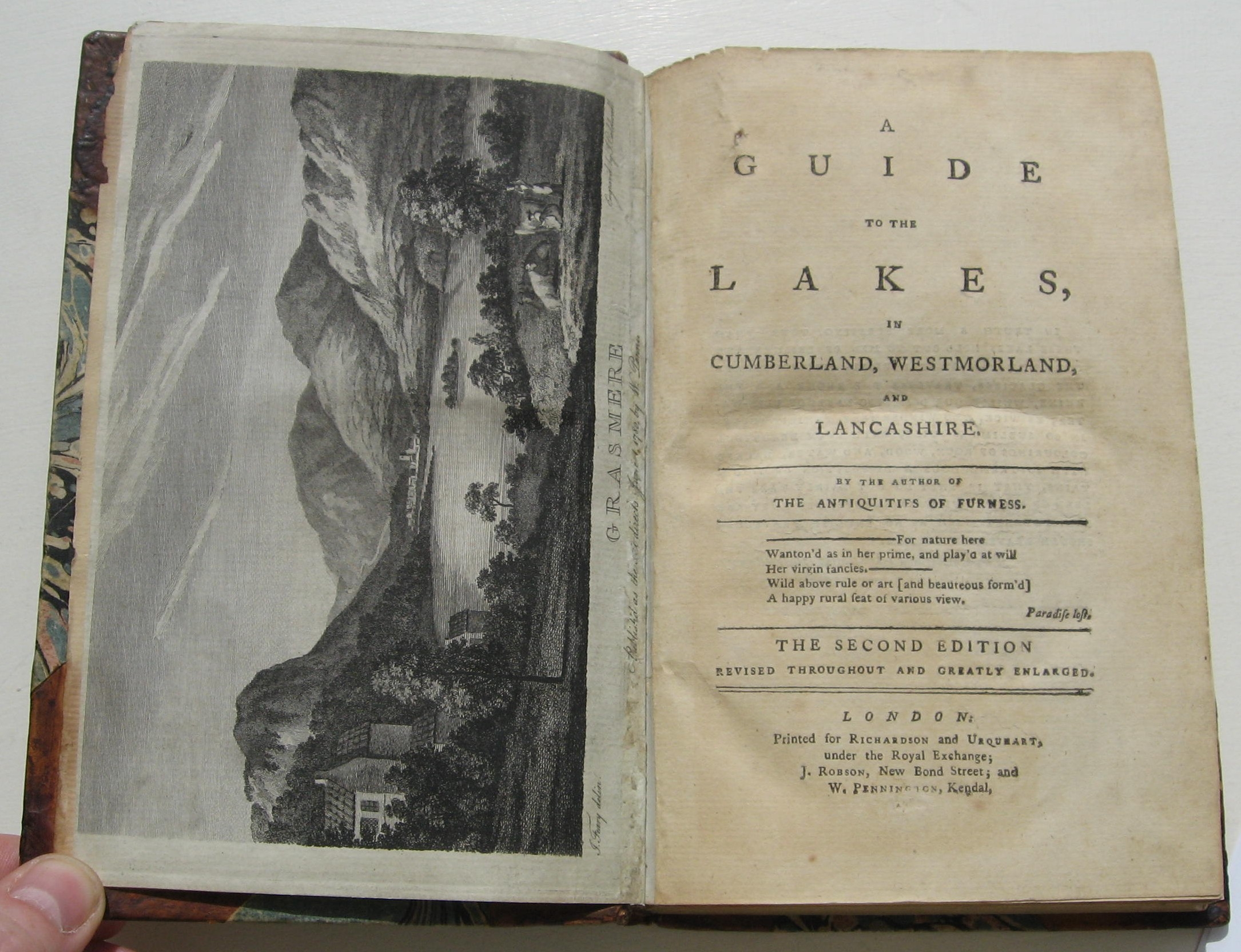Guidebooks and travel literature
Travel literature of the Lake District developed as the eighteenth century progressed. Early published works included descriptions of the area using language of the sublime to describe their author’s experiences, comparing landscape views to the works of European artists. The landscape of Borrowdale was described by Dr John Brown in the 1850s in terms of its “beauty, horror and immensity”.
Thomas Gray visited in 1769 and described the area in classical terms: the vale of Grasmere was described as “an unsuspected paradise” in his travel journal published in 1775. A Jesuit priest, Father Thomas West, published a route in 1778 which included recommended viewing stations and advice as to the best time to see the landscape. This is considered the first ‘guide‘ to the Lakes. The Rev. William Gilpin published his Observations in 1786 which advised the traveler as to where to find the best places for drawing the landscape; it included theories of the picturesque, the search for that which looks good in a picture.

Many others published accounts of their travels: in the last 25 years of the eighteenth century at least 15 accounts of Lake District tours were published as books. Such books would make reference to the ‘standard’ literature (including those listed above), often reprinting large chunks verbatim.
In 1810 Wordsworth published (anonymously) an introduction to a set of prints made from drawings by the Rev. Joseph Wilkinson. This introduction differed to previously published literature in that it came from an author who cared passionately about the area, its natural beauty, its history and its people. This introduction appeared as a separate volume in 1822 as Wordsworth’s own guide, a year after the 11th and final edition of that by Thomas West.
Frontispiece to West's Guide, The Wordsworth Trust.
